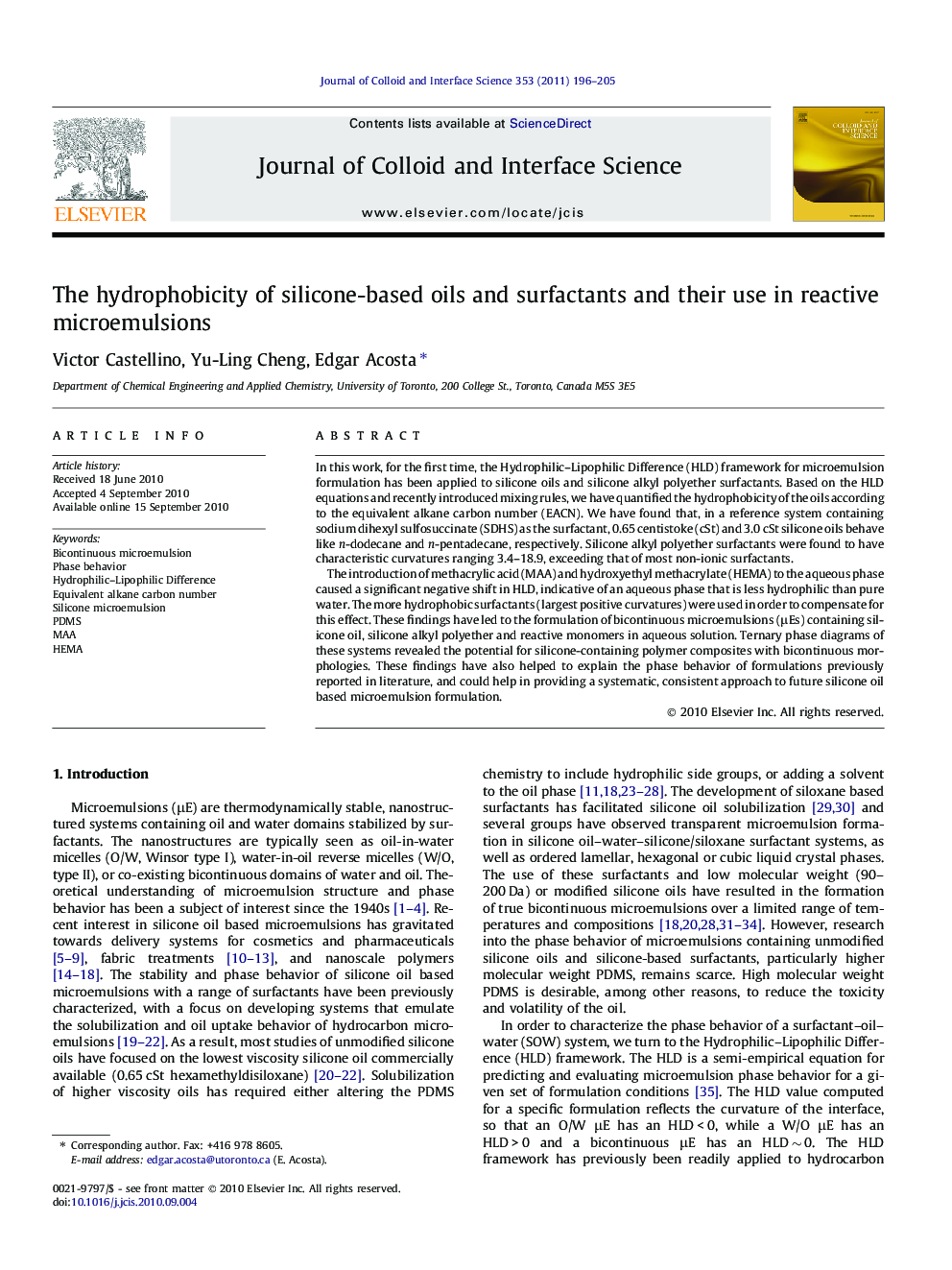| کد مقاله | کد نشریه | سال انتشار | مقاله انگلیسی | نسخه تمام متن |
|---|---|---|---|---|
| 608989 | 880612 | 2011 | 10 صفحه PDF | دانلود رایگان |

In this work, for the first time, the Hydrophilic–Lipophilic Difference (HLD) framework for microemulsion formulation has been applied to silicone oils and silicone alkyl polyether surfactants. Based on the HLD equations and recently introduced mixing rules, we have quantified the hydrophobicity of the oils according to the equivalent alkane carbon number (EACN). We have found that, in a reference system containing sodium dihexyl sulfosuccinate (SDHS) as the surfactant, 0.65 centistoke (cSt) and 3.0 cSt silicone oils behave like n-dodecane and n-pentadecane, respectively. Silicone alkyl polyether surfactants were found to have characteristic curvatures ranging 3.4–18.9, exceeding that of most non-ionic surfactants.The introduction of methacrylic acid (MAA) and hydroxyethyl methacrylate (HEMA) to the aqueous phase caused a significant negative shift in HLD, indicative of an aqueous phase that is less hydrophilic than pure water. The more hydrophobic surfactants (largest positive curvatures) were used in order to compensate for this effect. These findings have led to the formulation of bicontinuous microemulsions (μEs) containing silicone oil, silicone alkyl polyether and reactive monomers in aqueous solution. Ternary phase diagrams of these systems revealed the potential for silicone-containing polymer composites with bicontinuous morphologies. These findings have also helped to explain the phase behavior of formulations previously reported in literature, and could help in providing a systematic, consistent approach to future silicone oil based microemulsion formulation.
Ternary phase diagram of reactive silicone microemulsions (region 1) formulated using the Hydrophilic–Lipophilic Difference framework, containing methacrylic acid and hydroxyethyl methacrylate in aqueous solution, 3 cSt silicone oil and silicone alkyl polyether surfactants at pH 2.5, T = 25 °C..Figure optionsDownload high-quality image (40 K)Download as PowerPoint slideResearch highlights
► Hydrophilic–Lipophilic Difference (HLD) framework for microemulsion formulation applied to silicone oils and surfactants.
► Silicone oils characterized by equivalent alkane carbon number (EACN).
► Reactive, bicontinuous microemulsions containing silicone oil, methacrylic acid and hydroxyethyl methacrylate formulated.
► Provides a consistent, mathematical framework for future studies of silicone microemulsions.
Journal: Journal of Colloid and Interface Science - Volume 353, Issue 1, 1 January 2011, Pages 196–205